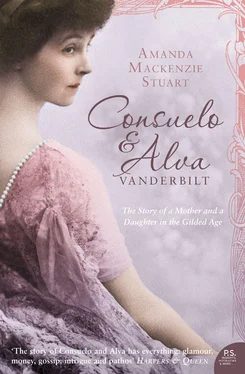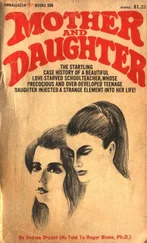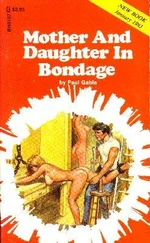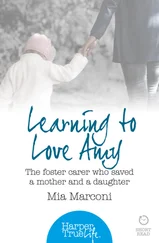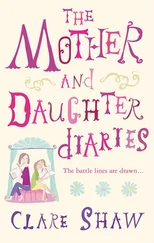Perhaps Consuelo was never allowed to grasp just how close her mother and aunts came to financial ruin when they were in their teens, either. Alva’s experience of genteel poverty thus far had made her almost as ‘inflamed’ on the subject of money as the Commodore. Like him she was acutely aware of its power. Even in 1917, she tried to persuade Sara Bard Field to marry a rich man for the benefit of her children saying: ‘You cannot help your children to advantages through sentimental romance but through money which alone has power.’ 75 For over two years Alva had experienced at first hand the growing powerlessness that poverty brings, the terrifying insecurity of a family sliding ever closer to bankruptcy with nothing in the way of a safety net as it tried to preserve a refined front. She had known what it was to have slaves. She now sensed the enslavement of poverty for herself and its capacity to force her to the margins of her own existence. At best she faced a world of erratic kindness from her friends’ parents, a life of constant gratitude. At worst, she could expect extended and difficult stays with patronising relations, a world of fading watering-holes and drab and grimy boarding houses.
In New York, true poverty was often close by. As the historian H. Wayne Morgan writes, this was a time of extremes, ‘of low wages and huge dividends, of garish display and of poverty, of opulent richness in one row of houses and degrading poverty a block away’. 76 Somewhere beneath 14th Street, the ‘other half’ lived in a world of slum tenements and sweatshops, but it was not a sealed world. In Manhattan, said another writer, ‘Wealth is everywhere elbowed by poverty.’ 77 Genteel poverty was even closer in the streets near the Smiths; and to Alva, life as a woman on these margins was no life at all. ‘It has seemed to me since that women and girls always play the part of spectators in the theatre of life while men and boys have the vivid action. And except to the serene gods there is nothing attractive in looking on,’ 78 she once said. It was a theme on which she would play many variations throughout her life.
When Alva was twenty-one, her father’s health started to fail as a result of acute financial strain, and possibly because of a drink problem. In the summer of 1874, Alva travelled to White Sulphur Springs in Virginia, a popular resort since the eighteenth century on account of its mineral waters, and a well-known spot for southern belles wishing to secure proposals of marriage. She knew that William K. Vanderbilt was also on his way there and she was under immense pressure. Although Alva may appear as coolly cynical as Edith Wharton’s Undine Spragg in The Custom of the Country , her anxious manipulations in 1874 seem much closer to those of the orphaned Lily Bart in The House of Mirth – who knew that she had to ‘calculate and contrive, and retreat and advance’ if she were to succeed, and who ‘hated dinginess as much as her mother had hated it, and to her last breath she meant to fight against it, dragging herself up again and again above its flood till she gained the bright pinnacles of success which presented such a slippery surface to her clutch’. 79 At twenty-one, it was clear that Alva already felt that her years were against her for she would lie to William K. about her age, telling him that she was a year younger than she actually was – an error which continued to appear in Vanderbilt legal documents long after his death.
Much later, Town Topics would recall the gossips’ story about the way Alva netted her husband at White Sulphur Springs in 1874. According to the whisperers, she had decided that a grand gesture was required so she went to the village store and bought yards and yards of black tarlatan which she and her old nurse turned into a dress in the course of the afternoon: ‘At dusk when everyone was upstairs dressing for dinner, the gay young girl and the old bent black woman took a mountain trail over the hill and half an hour later slipped back into the hotel laden with goldenrod.’ Together, Alva and her nurse stitched tiny Dresden bouquets of yellow goldenrod flowers all over the black tarlatan dress to spectacular effect. ‘The charming brunette, her beauty well framed in the black and gold, made her appearance in the ballroom. She was the sensation of the evening.’ 80 When the group returned to New York in September, Alva Erskine Smith and William Kissam Vanderbilt were formally engaged.
IN SPITE OF Murray Smith’s failing health, the family rallied to give its saviour a smart wedding. Some press reports suggest that Murray Smith felt well enough to give his daughter away in marriage, but Alva was adamant in her memoirs that he was too ill to attend, telling Sara Bard Field: ‘When I was all dressed up for the ceremony and about to leave the house he kissed me with great tenderness and told me I was taking a great burden off his mind and that he knew that if anything happened to him I would look after the rest of the family.’ 1 This notion that she had rescued the Smiths – and had done as well as any absent son – was important to Alva’s view of herself in later life, allowing her to think of herself as a heroine rather than a gold-digger. In a letter to her lover, Charles Erskine Scott Wood, Sara Bard Field remarked that Alva’s ‘terrible marriage to Mr Vanderbilt with its sordid selling of her unloving self but with the truly noble desire to save her Father’ was much like life itself: ‘a pathetic mixture of good and bad’. 2
Whatever her reasons for marrying William K. Vanderbilt, Alva went to some lengths to ensure that her wedding on 20 April 1875 was impressively exclusive. It was reported as ‘the grandest wedding witnessed in this city for many years’, 3 and even in old age she was anxious to stress that Calvary Church was the most fashionable church in New York and that Dr Washburn who conducted the marriage service was the most fashionable divine. Her bridesmaids included Consuelo Yznaga and Edith Cooper, but Minnie Stevens was too ill to attend and had to be replaced at the last minute by Natica Yznaga. Alva’s wedding dress from Paris failed to arrive in time (or so she said) and another was run up by Madame Donovan of New York using Phoebe’s antique lace flounces. The New York Times remarked that the wedding guests included ‘hundreds’ of the ‘wealth and fashion of the city’, 4 although most of those it listed were in-laws to the Vanderbilts. Four policemen had to escort the bride through crowds from her carriage. Significantly, Alva was the first bride in New York to issue cards of admission to her wedding guests, a move guaranteed to bring crowds of the excluded flocking to the church door.
The account of her wedding that Alva dictated to her secretary, Mary Young, after 1928 suggests that she grasped early the Faustian bargain emerging between publicity and social success in Gilded Age New York – a development deplored by Henry James a decade later. ‘One sketches one’s age but imperfectly if one doesn’t touch on that particular matter: the invasion, the impudence and shamelessness, of the newspaper and the interviewer, the devouring publicity of life, the extinction of all sense between public and private. It is the highest expression of the note of “familiarity”, the sinking of manners, in so many ways, which the democratisation of the world brings with it,’ 5 he expostulated in 1887.
In a democratised world with few other navigational aids, visibility was rapidly becoming the key to social success and it was largely in the gift of newspapers (now becoming big businesses in their own right), and later assisted by the invention of photography. Almost everyone with social ambitions had to come to terms with this. Alva and William K. were part of a younger group. They were already much less inhibited about using publicity as a weapon than their elders, though even they would find it difficult to manipulate by the 1890s. ‘Unable to control the press, and unwilling to consider life without heightened visibility, the late nineteenth-century aristocrats were America’s first celebrity-martyrs,’ 6 writes Eric Homberger. If heiresses such as Gertrude Vanderbilt and Consuelo later complained that they hated being watched, they had good reason to blame their parents’ generation for seeking out publicity twenty years earlier.
Читать дальше
